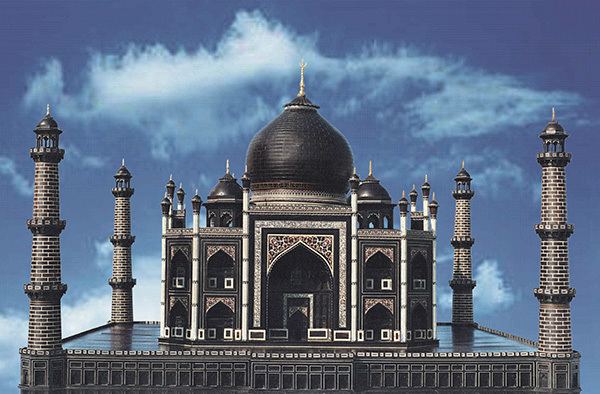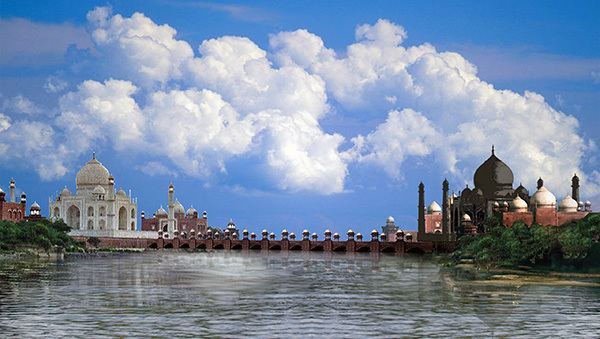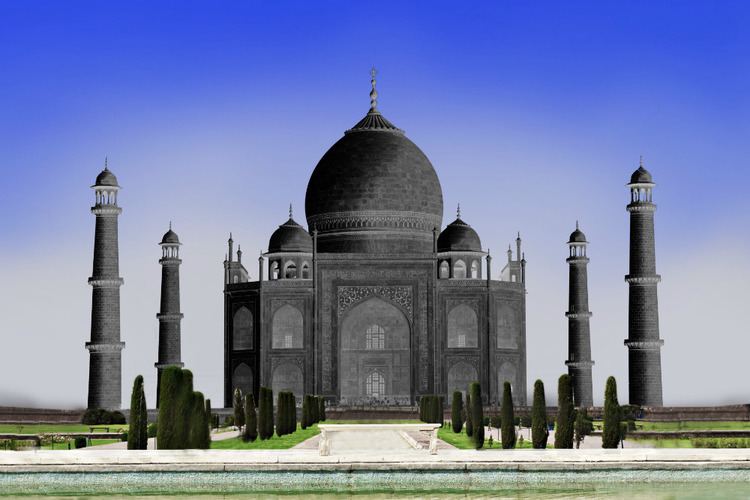Elevation 171 m (561 ft) | Type Cultural | |
 | ||
Similar Bibi Ka Maqbara, Mehtab Bagh, Taj Mahal | ||
The Black Taj Mahal (Hindi: काला ताज महल, from Persian/Urdu: سیاہ تاج محل "Black Taj", "Kaala Taj", also "the 2nd Taj") is a legendary black marble mausoleum that is said to have been planned to be built across the Yamuna River opposite the Taj Mahal in Agra, Uttar Pradesh, India. Mughal emperor Shah Jahan is widely believed to have desired a mausoleum for himself similar to that of the one he had built in memory of his third wife, Mumtaz Mahal.
Contents

A European traveler by the name of Jean Baptiste Tavernier who visited Agra in 1665 first mentioned the idea of Black Taj in his fanciful writings. The writings of Tavernier mention that Shah Jahan began to build his own tomb on the other side of the river but could not complete it as he was deposed by his own son Aurangzeb. However, many modern archeologists believe this story to be myth.

black taj mahal has become the secret behind
Background

Ever since the construction of Taj Mahal, the building has been the source of an admiration transcending culture and geography, and so personal and emotional responses have consistently eclipsed scholastic appraisals of the monument.

The belief holds that Shah Jahan planned a mausoleum to be built in black marble across the Yamuna river, with the two structures connected by a bridge. The idea originates from fanciful writings of Jean-Baptiste Tavernier, a European traveller who visited Agra in 1665. It was suggested that Shah Jahan was overthrown by his son Aurangzeb before it could be built. Ruins of blackened marble across the river in Moonlight Garden, Mahtab Bagh, seemed to support this legend.
Myth

Many scholars believe the idea of the Black Taj belongs to fiction rather than history. The traces which are identified as the foundations of the 2nd Taj are actually the enclosing wall of a garden founded by Babur. The irregular position of Shah Jahan's cenotaph in comparison to Mumtaz Mahal's, is similar to that at the tomb of Itmad-ud-Daulah, and thus should not be of any striking significance. Besides, according to Islamic law, bodies are buried with their faces towards Mecca and legs towards the south, and the husband is placed on the right hand side of his wife. The interpretation that the cenotaph of Shah Jahan was not meant to be placed here appears to be superfluous.
Modern excavations

Modern excavations carried out in the 1990s found that they were discolored white stones that had turned black. As some believe that a more credible theory for the origins of the black mausoleum was demonstrated in 2006 by archaeologists who reconstructed part of the pool in the Moonlight Garden. A dark reflection of the white mausoleum could clearly be seen, befitting Shah Jahan's obsession with symmetry and the positioning of the pool itself.
